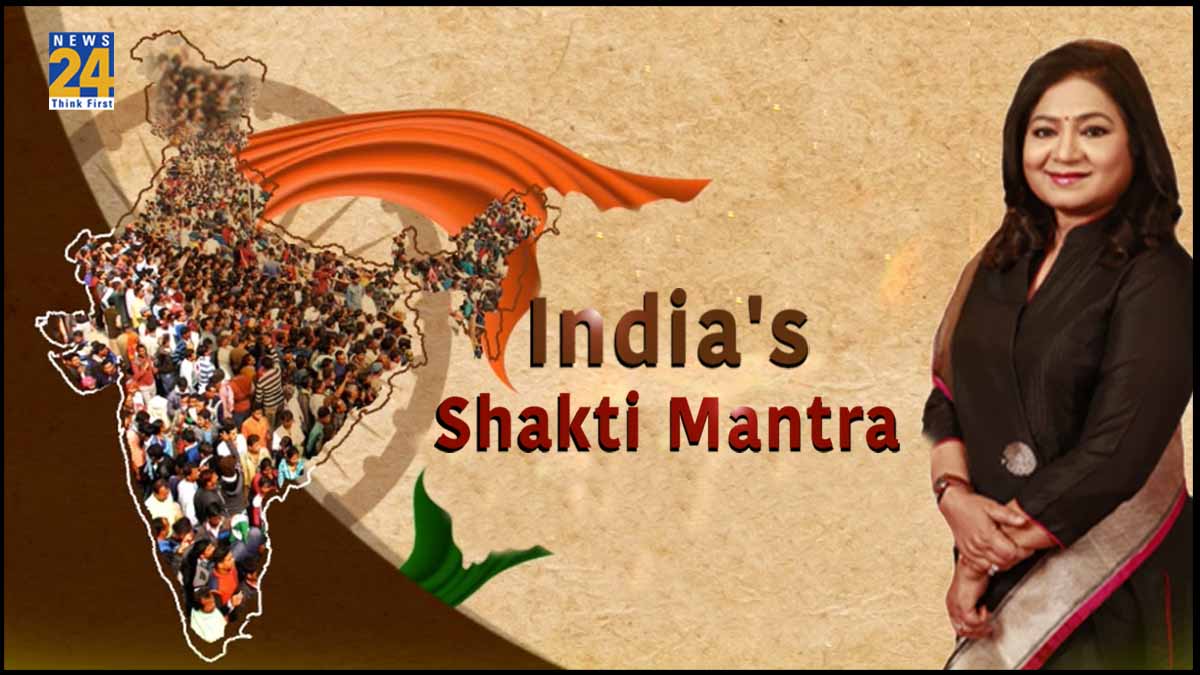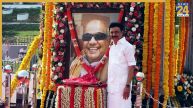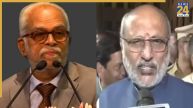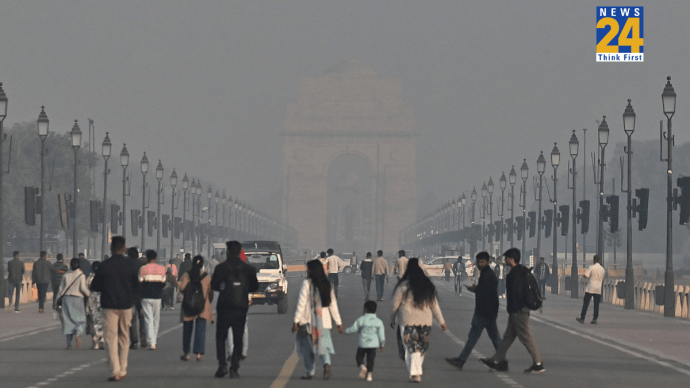– Anurradha Prasad
(CMD and Editor-in-Chief, News24)
Have you ever contemplated the meaning of shakti (power)? From ancient times to the middle Ages, shakti or power has generally been associated with those who had mighty armies. However, in a democracy, power is perceived as having the most support from the people. Further, in the economic realm, powerful individuals are seen as those with substantial bank balances and turnovers. Distinctively, in the age of social media, power is defined by the number of followers one has. Now the question arises: What are the various forms of power? How have our deities shaped the concept of power in society?
Nine Manifestations for Society
Navaratri has begun, and in India, Goddess Durga is revered as the embodiment of strength and the destroyer of evil. She rides a lion and wields various weapons in her many hands. But in her nine manifestations, what message is she conveying to society? Perhaps one interpretation is that Goddess Durga is inspiring all segments of society, both men and women, to be self-reliant, empowered, knowledgeable, and self-assured.
A Mantra for Creation
In her first form, Shailaputri teaches anyone, regardless of gender, to be self-respecting and unwavering in their goals. In her second form, Brahmacharini, she guides people to stay disciplined and not deviate from their objectives in any circumstances. In the third form, Chandraghanta gives the message that it is essential for society to have a balanced household life. In the fourth form, Kushmanda enjoys life as Lord Shiva’s wife, emphasizing the importance of married life for creating and advancing society. However, all these states can only be sustained when there is peace and when negative forces are kept at bay. In such situations, being powerful becomes a necessity. Thus, in her next form, she wields weapons while riding a lion as Katyayani, signifying the need to be strong.
Breaking Gender Barriers
Katyayani dispels gender-based thinking because she emerges as a fierce woman in her prime, ready to defeat Mahishasura, the demon vanquisher of all the deities. In her most formidable form, Kalaratri, she becomes the dark night, armed and relentless.
In these diverse forms, Goddess Durga has messages for society, encouraging self-empowerment and breaking down the barriers of gender-based thinking. As we celebrate Navaratri, we should contemplate the contemporary interpretations of her nine forms and the power they represent.
India’s Power Mantra
You may have often heard that victors write history in their own way. Throughout world history, countless tales are filled with battles fought to expand borders. The sword has been the yardstick of power in establishing and toppling empires. People who attempted to change history and geography through the power of the sword were elevated as heroes. However, Indian tradition has consistently looked at power differently. Have you ever given it a serious thought?
In India, the philosophical concept is “Aham Brahmasmi,” which teaches people to become powerful and shows them the path to becoming empowered. This philosophy has given rise to the tangible forms of deities. During Navaratri, millions of people in India worship Goddess Durga, considering her the deity of strength. But through her nine forms, how is she showing society the path to attain power?
First, she is Shailaputri, inspiring individuals to be self-respecting and unwavering in their goals. Then, she becomes Brahmacharini, encouraging people to stay disciplined and never deviate from their goals in any situation. In her third form, Chandraghanta, she teaches the importance of a balanced household life. Subsequently, she transforms into Kushmanda, emphasizing the significance of married life for creating and advancing society. However, all these states can only be sustained when there is peace and when negative forces are kept at bay. In such situations, being powerful becomes a necessity.
In her next form, Katyayani, she wields weapons while riding a lion, signifying the need for strength. In this form, she dispels gender-based thinking because she emerges as a fierce woman, ready to defeat Mahishasura, the demon vanquisher of all the deities. Finally, in her most formidable form, Kalaratri, she becomes the dark night, armed and relentless.
Goddess Durga’s nine forms provide a contemporary interpretation of her message: self-empowerment and the breakdown of gender-based thinking. As we celebrate Navaratri, we should contemplate these interpretations and the power they represent.
In the context of Sri Rama, we perceive strength within the boundaries of honor, much like how Shiva is considered the embodiment of peace, destruction, and universal welfare. Even though they believe in the formless Brahman, people in their own ways hold faith in them. They regard Shiva as the creator and sustainer of the universe. However, the form in which they are portrayed in Indian tradition reveals that despite their omnipotence, they believe in sacrifice. They show the path of harmony and walking alongside society. Similarly, in the Treta Yuga, Sri Rama instills a sense of power within the framework of honor. Even though they possess weapons, they demonstrate discipline and establish a mantra for the power and prosperity of society within the boundaries of a king’s honor. Likewise, in the Dvapara Yuga, Lord Krishna sometimes holds a flute, and at other times, he wields the Sudarshana Chakra. However, they consider action as power, showing the way to resolve significant issues through dialogue.
They acknowledge each other’s existence and importance. In Lord Shiva’s family, the tiger, Nandi, peacock, snake, and mouse coexist. Each has its strengths and boundaries. Even beings with contrasting natures do not intimidate or threaten each other. They live together, engage in conversations, and value each other’s existence. Despite being all-powerful, Lord Shiva remains completely devoid of arrogance. Similarly, Lord Rama wields weapons, but as part of the Indian society, he is the ultimate ideal. He is a good son, husband, brother, warrior, friend, and king in every form, establishing a high moral standard in society.
The Ultimate Goal of Power is Peace
From the beginning of Indian tradition, there has been an attempt to instill in people’s minds that the more powerful one is, the more humble one should be. They are willing to sacrifice to connect and advance society, and the ultimate goal of power is peace. This path leads to the prosperity of all. If we look beyond the revered deities in the country, in modern times, Mahatma Gandhi saw strength in truth and nonviolence. This was a time when much of the world was engaged in conflict over military might. Gandhi demonstrated that nonviolent resistance, without the use of weapons, could force a superpower like Britain to leave the country and proved that a crowd thirsty for blood could be controlled through moral strength.
Similarly, after independence, Pandit Jawaharlal Nehru saw strength in wiping away the tears of the last person in society. Lal Bahadur Shastri, when he took charge after Nehru’s era, combined strength with securing the borders while wiping away the tears of the nation. He shifted idealist diplomacy towards practicality based on India’s needs. Indira Gandhi, on the other hand, showed the world that power can also be used to free people from oppression in other countries. In 1971, the emergence of Bangladesh as a nation is a shining example of India’s growing influence on the world stage. Additionally, Atal Bihari Vajpayee demonstrated that India, regardless of pressure or influence, believes in making decisions free from any bias and prejudice when he conducted nuclear tests. He ensured that India would not accept any system with discrimination on international platforms. Likewise, Prime Minister Modi, with his missions, emphasizes the importance of recognizing the power to connect more and more people to the nation.
Philosophy of Making Others’ Lives Better
Although the meaning of power in India has undergone a change over time in response to the prevailing circumstances, the fundamental purpose of power has always been to make others’ lives better. The beautiful aspect of power is that, with their Power, Influence, and Charisma, both common people and the elite have the potential to significantly influence society by bridging gaps.













